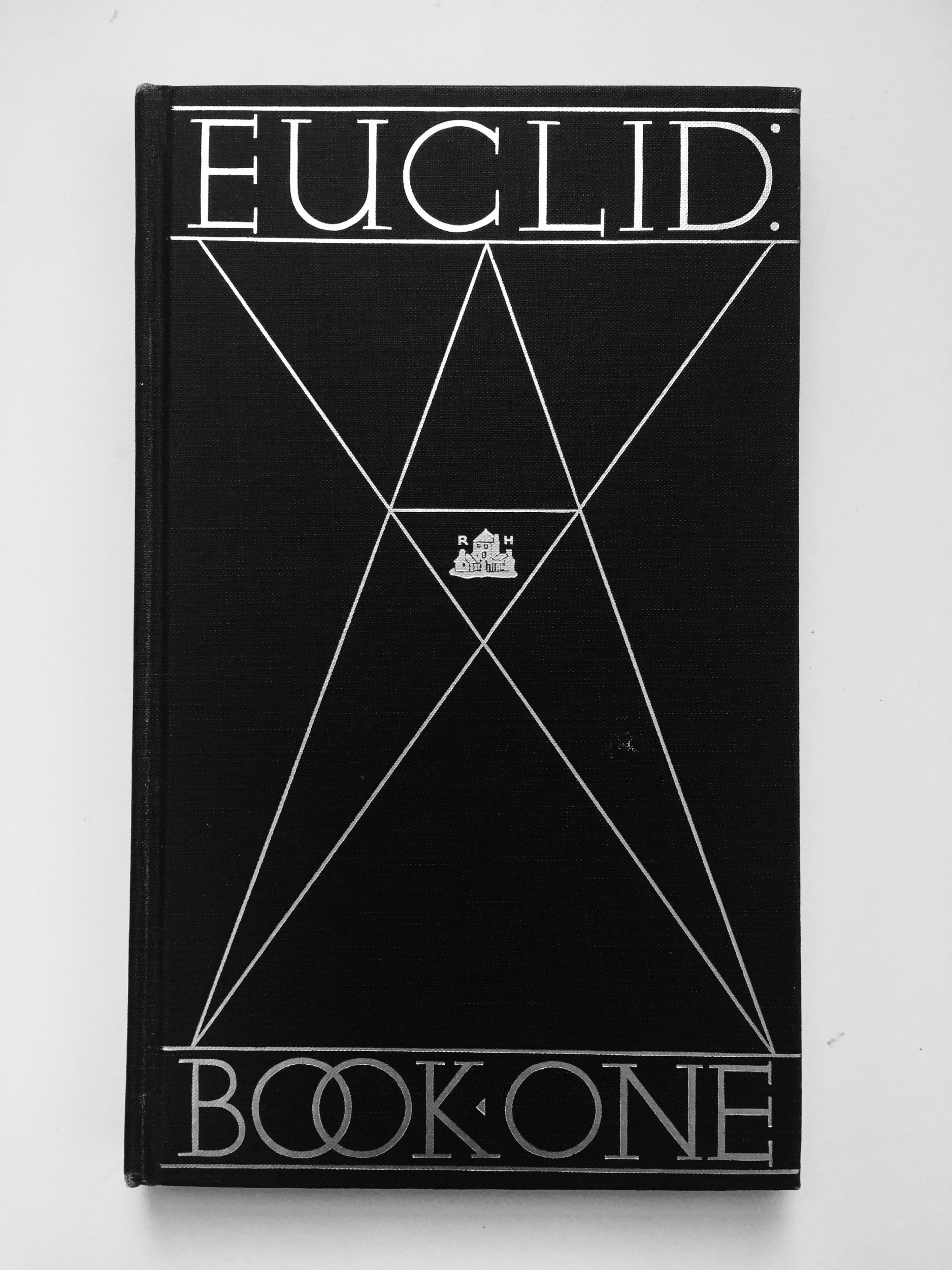Written by Gretchen Von Koenig
Elements of Geometry by Euclid is one of the most printed books in the world, second only to the Bible. A critical subject for any branch of mathematics, Euclid’s Elements is a timeless book and certainly an ideal project for Bruce Rogers, one of the most prolific American book and graphic designers in the first half of the 20th century, called the “father of book design” .
As a devout follower of the Arts and Crafts movement, Rogers’ work reflects William Morris’s aesthetics. Intricate wood block illustrations, simple and centered type styling, and title page embellishments were all common and steadfast elements of Bruce Rogers’ work. In fact, other Bruce Rogers publications in the Cooper Hewitt’s Library reflect these ideals. However, Euclid’s Elements, published in 1943, is a rare glimpse of Rogers not using an Arts and Crafts aesthetic, but rather a very modernist one.
Rogers’ professional career coincides with the rise of modernism, as he was primarily active from 1900-1950. In this time, publications like Adolf Loos’s “Ornament and Crime” and Bauhaus ideals were taking the design world by storm. While Rogers definitely kept to his personal aesthetic choices of the Arts and Crafts, there is a clear break in his style with the Euclid. In the Euclid we see little to no embellishments, simple and unadorned mathematical illustrations, and an abandonment of any ornament. In fact, when approached by Random House to do a small-batch collectors’ book, Rogers was the one who picked the subject matter of Euclid. This choice also reflects the modernist ideals of appreciation of simple geometries and machine-like structure. In his next following publications, however, Rogers does revert back to his Arts and Crafts roots.
Was Bruce Rogers’ giving into his era’s aesthetic? Was he simply challenging himself, as a designer, to work in a new style? Did he choose modernism because it represented math well, or did he choose the subject matter, geometry, because it represented modernism well? Or was he simply trying to appeal to the commercial audience of his time, an era of modernism? What ever his angle was, Euclid’s Elements was a standout piece in Rogers’ career: a beautifully executed, modernist design.
Gretchen Von Koenig is a MA Student at the Cooper Hewitt and a fellow in the Education Department. She loves history and tacos.
